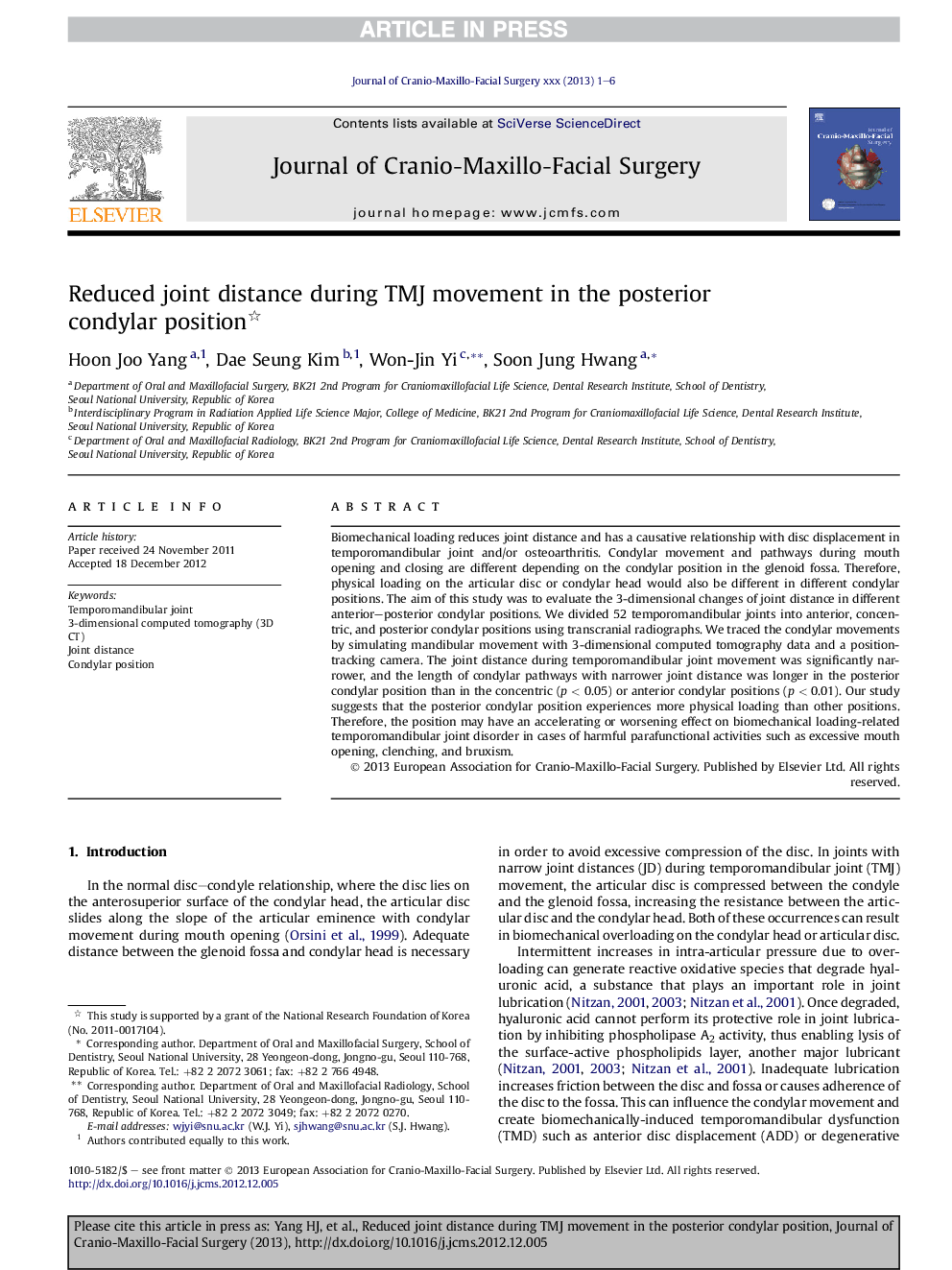| کد مقاله | کد نشریه | سال انتشار | مقاله انگلیسی | نسخه تمام متن |
|---|---|---|---|---|
| 6052927 | 1196800 | 2013 | 6 صفحه PDF | دانلود رایگان |
عنوان انگلیسی مقاله ISI
Reduced joint distance during TMJ movement in the posterior condylar position
دانلود مقاله + سفارش ترجمه
دانلود مقاله ISI انگلیسی
رایگان برای ایرانیان
موضوعات مرتبط
علوم پزشکی و سلامت
پزشکی و دندانپزشکی
دندانپزشکی، جراحی دهان و پزشکی
پیش نمایش صفحه اول مقاله

چکیده انگلیسی
Biomechanical loading reduces joint distance and has a causative relationship with disc displacement in temporomandibular joint and/or osteoarthritis. Condylar movement and pathways during mouth opening and closing are different depending on the condylar position in the glenoid fossa. Therefore, physical loading on the articular disc or condylar head would also be different in different condylar positions. The aim of this study was to evaluate the 3-dimensional changes of joint distance in different anterior-posterior condylar positions. We divided 52 temporomandibular joints into anterior, concentric, and posterior condylar positions using transcranial radiographs. We traced the condylar movements by simulating mandibular movement with 3-dimensional computed tomography data and a position-tracking camera. The joint distance during temporomandibular joint movement was significantly narrower, and the length of condylar pathways with narrower joint distance was longer in the posterior condylar position than in the concentric (p < 0.05) or anterior condylar positions (p < 0.01). Our study suggests that the posterior condylar position experiences more physical loading than other positions. Therefore, the position may have an accelerating or worsening effect on biomechanical loading-related temporomandibular joint disorder in cases of harmful parafunctional activities such as excessive mouth opening, clenching, and bruxism.
ناشر
Database: Elsevier - ScienceDirect (ساینس دایرکت)
Journal: Journal of Cranio-Maxillofacial Surgery - Volume 41, Issue 7, October 2013, Pages e159-e164
Journal: Journal of Cranio-Maxillofacial Surgery - Volume 41, Issue 7, October 2013, Pages e159-e164
نویسندگان
Hoon Joo Yang, Dae Seung Kim, Won-Jin Yi, Soon Jung Hwang,